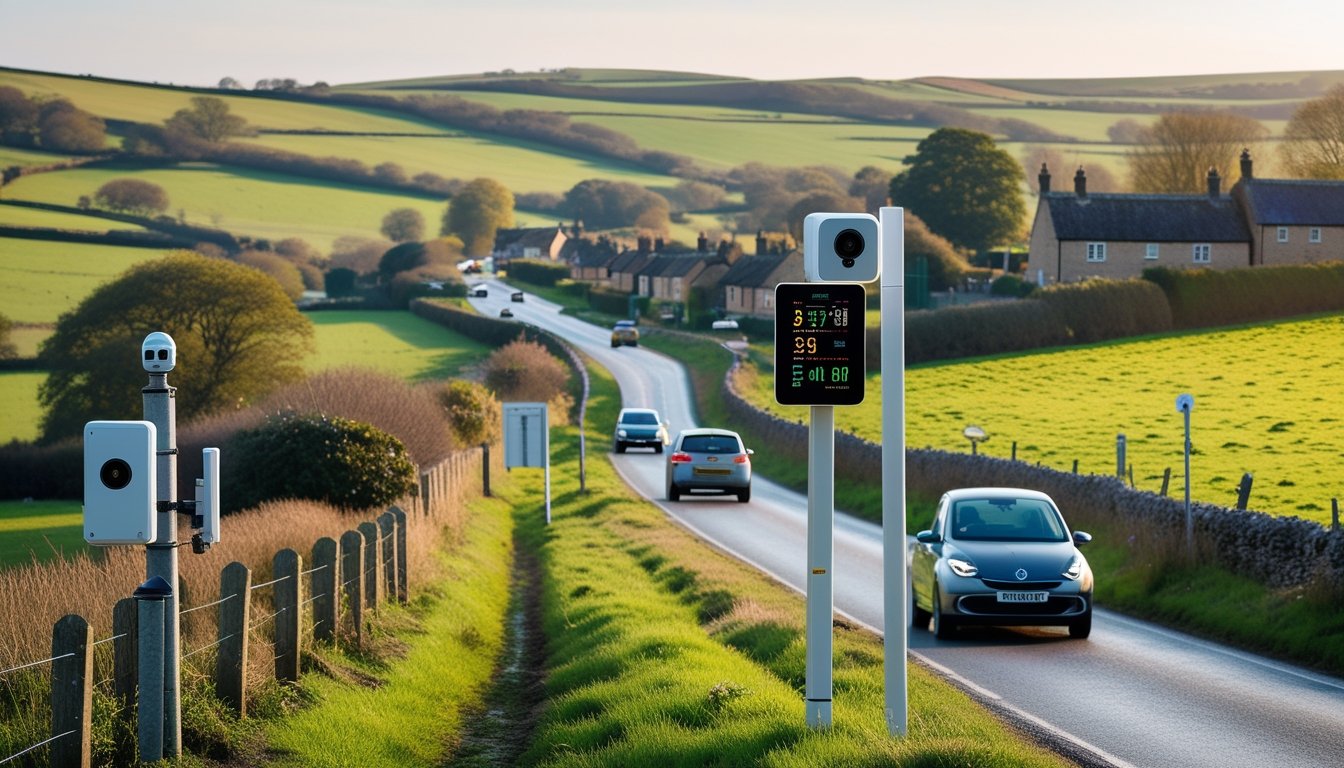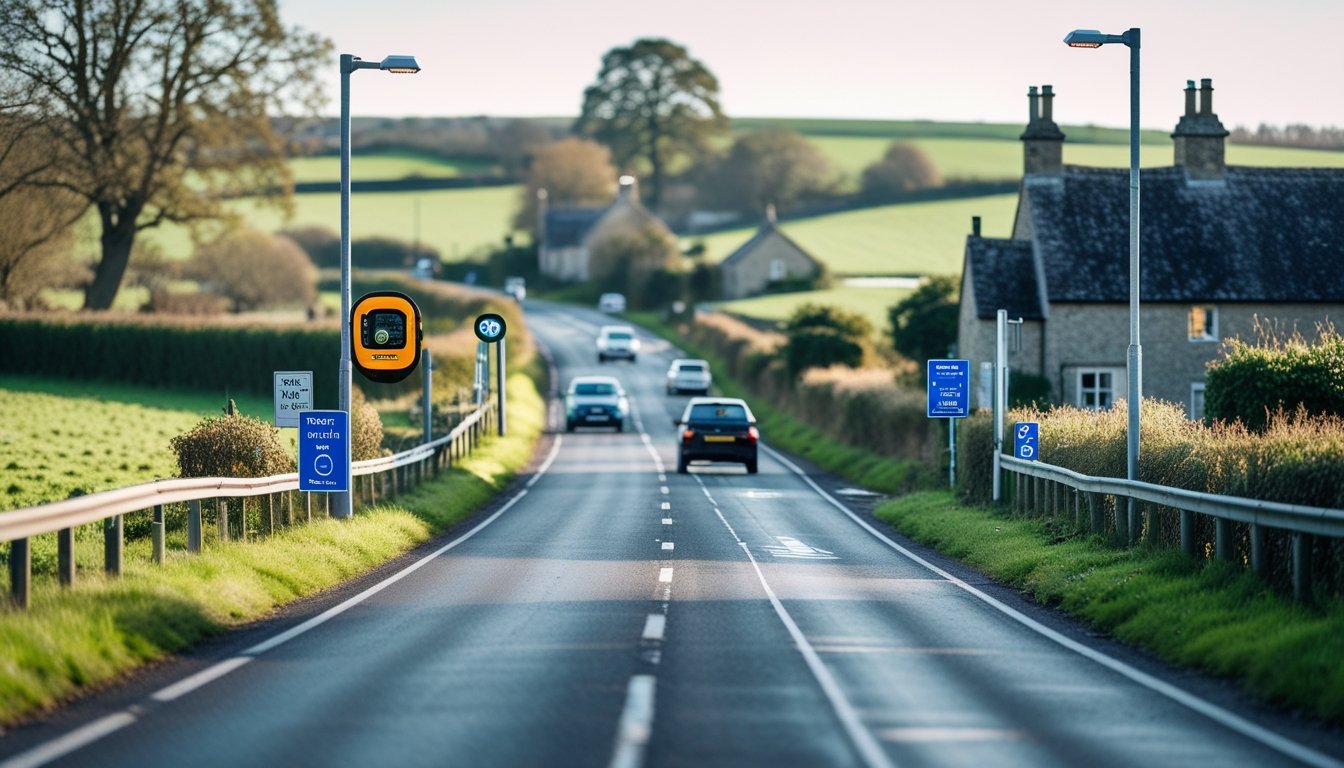Late updated: 13 May 2025 12:05
Written by: Oliver Bennett
Smart Traffic Solutions For UK Rural Communities: Enhancing Connectivity and Safety
The UK’s rural communities are facing unique challenges in modernising their transport infrastructure, particularly with the growing demand for sustainable and efficient mobility solutions. Smart traffic solutions that integrate advanced technologies provide a promising avenue for enhancing mobility in these areas. By leveraging AI innovations and community-driven resources, we can address the transportation needs of rural populations while promoting sustainability.

Integrating AI tools, like those developed for shared transport options, is fundamental in reshaping how rural mobility is approached. These technologies not only improve accessibility but also promote the use of shared, demand-responsive transport systems. This transformation is crucial, as many rural residents depend on community-based options due to limited personal vehicle access.
Our exploration will examine the core technological advancements driving this change and how their implementation can lead to effective smart traffic management in the UK's countryside. This journey holds the potential to redefine rural transport, ensuring these communities are not left behind in the nation's transport evolution.
Key Takeaways
- Smart technologies offer sustainable mobility solutions.
- AI tools enhance accessibility in rural transport.
- Implementation is key to effective traffic management.
Core Technologies Driving Smart Traffic Solutions in UK Rural Communities
In the UK, smart traffic solutions for rural areas rely heavily on innovative technologies. These technologies encompass digital infrastructure, IoT and sensor networks, alongside telematics and advanced data analytics, including artificial intelligence. Such advancements significantly enhance connectivity, information gathering, and analysis capabilities, facilitating better traffic management.
Digital Infrastructure and Connectivity
Strong digital infrastructure underpins smart traffic solutions. In rural areas, enhancing broadband connectivity and cellular networks is crucial. Telecommunication companies have invested in expanding 4G and 5G networks to offer wider coverage.
High-speed internet enables real-time data transfer essential for traffic management systems. Moreover, robust digital infrastructures lay the groundwork for communication between devices, sensors, and central management, ensuring seamless operation of smart traffic technologies.
Internet of Things and Sensor Networks
The Internet of Things (IoT) plays a pivotal role. IoT devices and sensor networks are employed to monitor traffic flow and road conditions in real time. Sensors are installed in vehicles, on roads, and at intersections, collecting vast amounts of data.
This information helps us understand traffic patterns and conditions, leading to proactive traffic management. GPS technology further enhances IoT systems by offering precise location data, aiding route optimisation and ensuring efficient transport logistics.
Telematics, Data Analytics, and Artificial Intelligence
Telematics involves using communication technology for tracking and data logging in vehicles. By integrating telematics with data analytics, immense potential exists for improving traffic flow and safety. Data gathered includes vehicle location, speed, and travel patterns.
Advanced analytical techniques, including machine learning and artificial intelligence (AI), are used to interpret this data. AI-driven insights allow for predictive traffic control, enabling authorities to make informed decisions and prepare for potential issues. Cyber security measures ensure data integrity and protect against threats, securing our infrastructure.
Implementing Effective Smart Traffic Management Across Rural UK

As we explore smart traffic management in rural UK, we focus on the deployment of modern traffic control devices and their integration with public transport to improve accessibility and efficiency.
Modern Traffic Control Devices and Solutions
In rural areas, effective traffic management solutions are crucial to enhancing road safety and reducing congestion. Systems like SRL's portable traffic signal solution, compliant with Topas 2540a, are popular for temporary traffic control. These systems are lightweight and solar-powered, making them ideal for areas without easy access to electricity.
Devices equipped with a Radio Acoustic Wave Stabiliser ensure consistent communication between units. IP57-rated solutions protect against water ingress, vital for unpredictable rural weather. Many systems are ultralight, simplifying deployment and maintenance, key considerations for local governments in budget management.
The Remos Solar Plus system offers a durable option for continuous operation in remote locations. By employing up-to-date, resilient technologies, rural communities can maintain traffic flow efficiently. This improves the overall quality of life by reducing delays and improving road safety.
Integration with Public Transport and Accessibility Initiatives
Integrating smart traffic management with public transport boosts accessibility in rural regions. Smart intersections can prioritise buses or emergency vehicles, ensuring timely arrivals and improving connectivity. Local councils play a critical role in coordinating efforts to optimise public transport links with existing road networks.
Bridges and other infrastructure benefit from smart traffic systems that efficiently manage flow and load, mitigating congestion. Enhancing accessibility requires strategic planning by aligning traffic systems with public transport, enhancing the overall experience for residents and visitors.
Through cohesive traffic and transport management, we promote sustainable and accessible transport options in rural UK, bridging the gap between technology and everyday commuting needs.
Frequently Asked Questions

Our traffic management solutions in rural UK communities incorporate the latest technologies to address unique challenges. Leveraging advancements in connectivity and innovative technologies, these solutions offer tailored options that differ significantly from urban approaches. The benefits include improved emergency response times, community involvement, and significant environmental gains.
What are the most effective traffic management systems currently deployed in UK rural areas?
In rural UK communities, effective traffic management systems include smart traffic lights, real-time traffic monitoring, and AI-driven data analytics platforms. These technologies optimise traffic flow and reduce congestion, enhancing overall transportation efficiency.
How do rural transport solutions differ from those in urban environments in the UK?
Rural transport solutions focus on larger geographical areas with lower population densities. They often rely on flexible, adaptable systems such as demand-responsive transport and connectivity enhancements through AI technologies, unlike the fixed routes common in urban areas.
What funding options are available for implementing smart traffic systems in rural communities?
Funding for smart traffic systems in rural areas frequently comes from government grants, public-private partnerships, and EU funding initiatives. These sources aim to promote rural development and technological advancement, supporting infrastructure improvements and technology integration.
How do smart traffic solutions impact emergency response times in rural locations?
Smart traffic solutions significantly enhance emergency response times by streamlining route planning and reducing travel time. Real-time data provides emergency services with the most efficient paths, ensuring quicker access to remote areas.
In what ways can community feedback be integrated into the development of rural traffic management?
Incorporating community feedback into traffic management involves public consultations, surveys, and digital platforms for ongoing communication. This ensures that the systems reflect local needs and receive community support, ultimately enhancing user satisfaction and system effectiveness.
What are the environmental advantages of adopting smart traffic solutions for rural areas?
Adopting smart traffic solutions in rural areas reduces vehicle emissions by improving traffic fluidity and minimising idle times. These systems promote the use of eco-friendly transport alternatives and help preserve the natural surroundings, contributing to sustainable rural development.
